US Icebreaker Healy On Succesful Research Voyage in the Siberian Arctic
Tromsø (High North News): The US' largest and most technologically advanced coast guard vessel, the icebreaker USCGC Healy, has visited Tromsø after an international research voyage in the Eastern Arctic Ocean. In previous years, this voyage has been conducted with Russian icebreakers.
Article by High North News
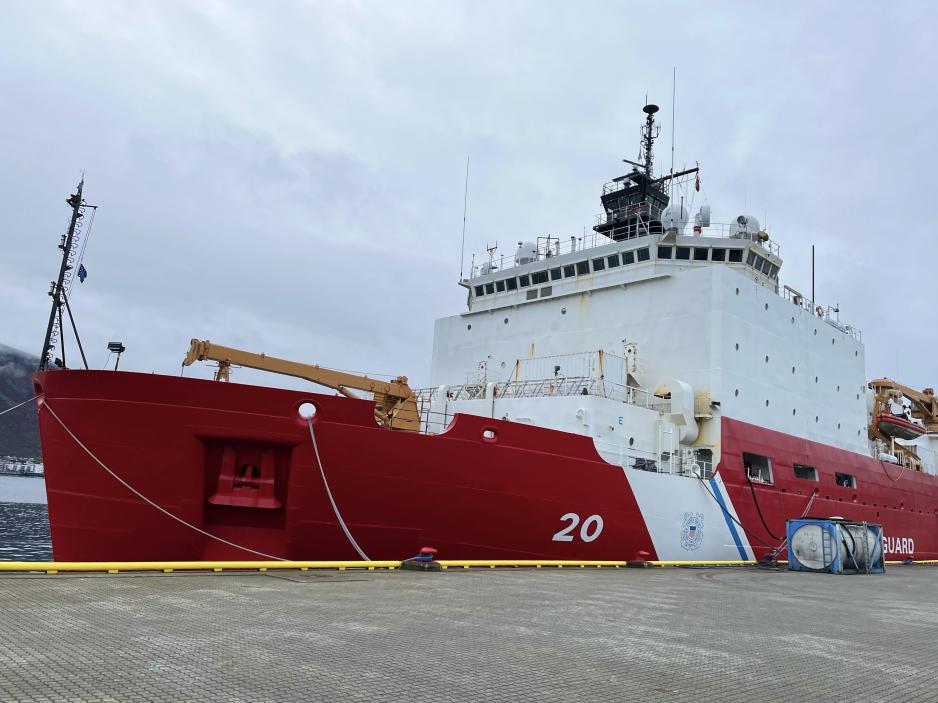
While the slender Norwegian Coast Guard vessel KV Svalbard is tone-on-tone with the sky and the sea in grey fall weather in Tromsø, Northern Norway, the visitor, USCGC Healy, sticks out with its red hull and towering figure.
This is the US’ largest coast guard ship and icebreaker – with technical finesse specifically for Arctic research.
Well over a month ago, Healy embarked on a research voyage in the eastern part of the Arctic Ocean from Kodiak, Alaska – and lately, the vessel has operated with the Norwegian coast guard vessel KV Svalbard in the Barents Sea.
The purpose of the voyage was to investigate the condition of the Siberian Arctic – where climate change has significantly affected the ocean, ice, and atmosphere. With several scientists aboard, Healy has operated the Nansen and Amundsen Basins Observational System (NABOS).
In practice, they have recovered existing and deployed new underwater scientific sensors. These measure temperature, salinity, and ocean currents at various depths – and were deployed during a 2021 cruise.
“The voyage has been very successful. It has taken place in both ice-free and ice-covered waters, with an increasing degree of ice towards the end of the mission in particular. Healy is a very capable vessel regarding the ice conditions we encountered, and we had no problems maneuvring for both scientific work and transit,” says Healy’s Commanding Officer, Captain Michele Schallip, to High North News.
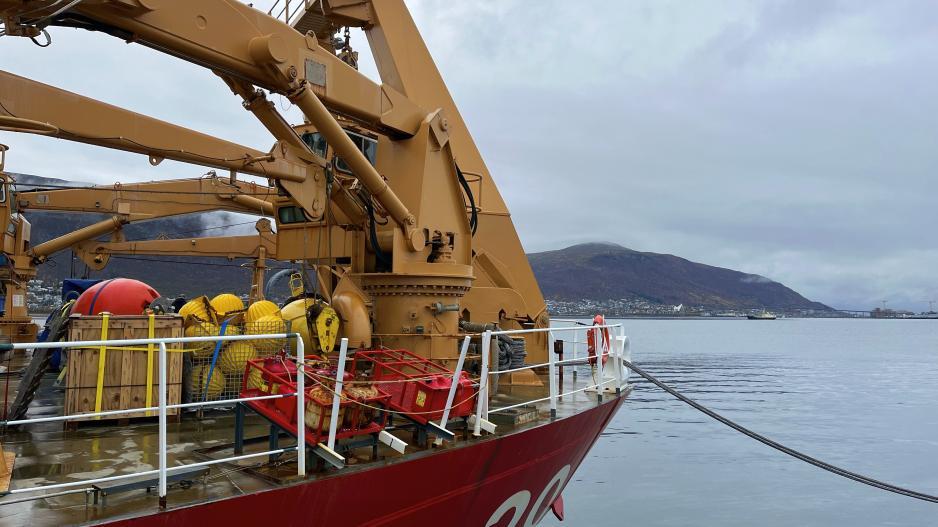
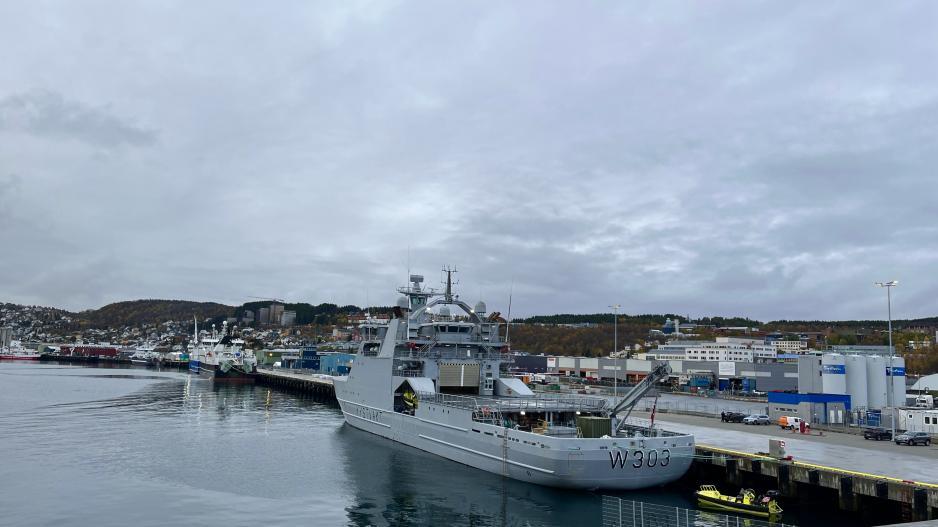
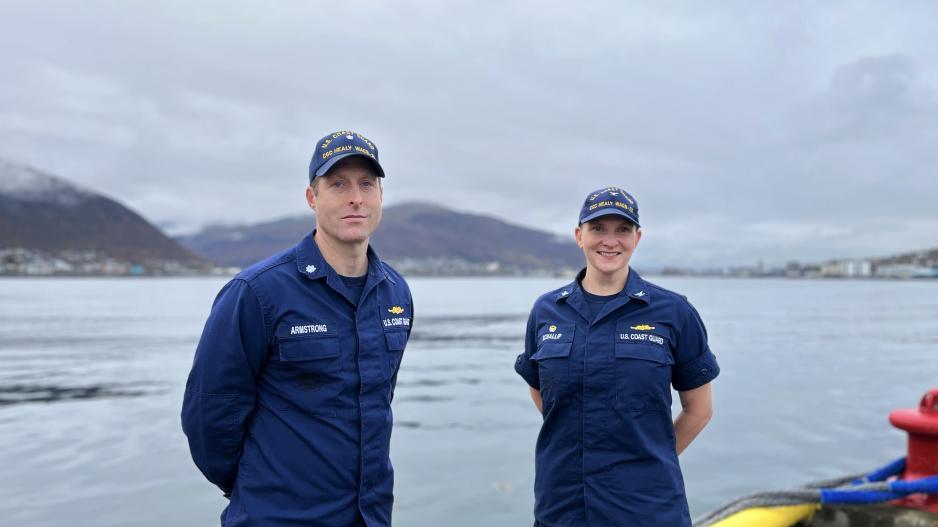
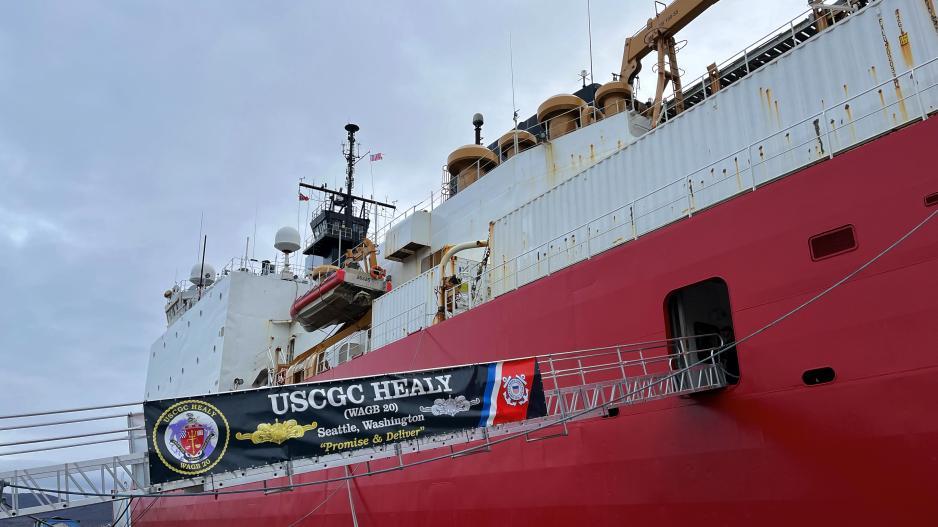
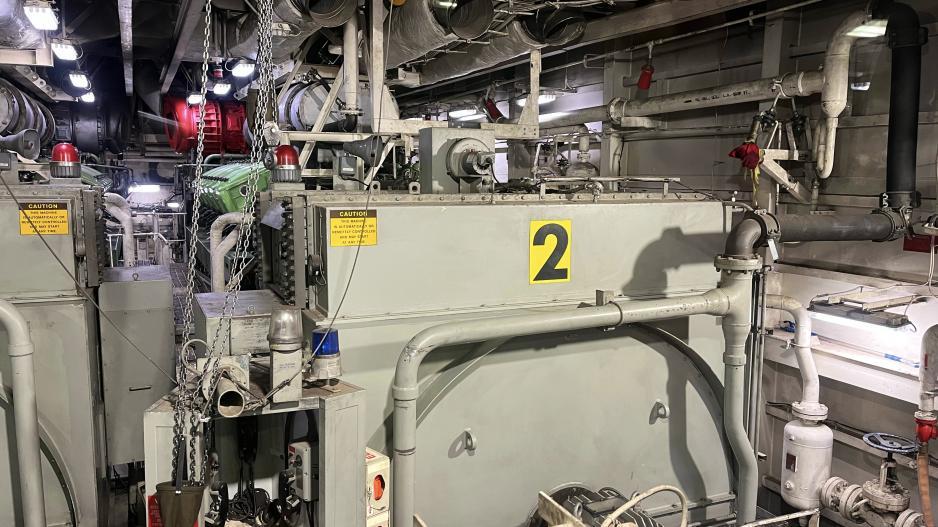
Old and new areas
The USCGC Healy is not a first-time visitor to Tromsø and Northern Norway. The icebreaker called at the city and docked at the same port in Breivika in 2005.
This visit was in connection with an Arctic Ocean voyage for seismological investigations with researchers from the US, Norway, and Sweden. This voyage also started in Alaska.
However, the USCGC Healy is the first US surface vessel to have sailed near the Northern Sea Route in the East-Siberian Ocean since the 1980s. This route is located within the Russian economic zone – and is subject to continuous development by Russia.
Before Moscow’s full-scale invasion of Ukraine, all previous NABOS expeditons – conducted bi-annually since 2002 – have taken place with Russian icebreakers.
For example, the 2021 cruise was conducted with the research vessel Akademik Trjosjnikov and included participants from the US, Russia, Japan, and Denmark.
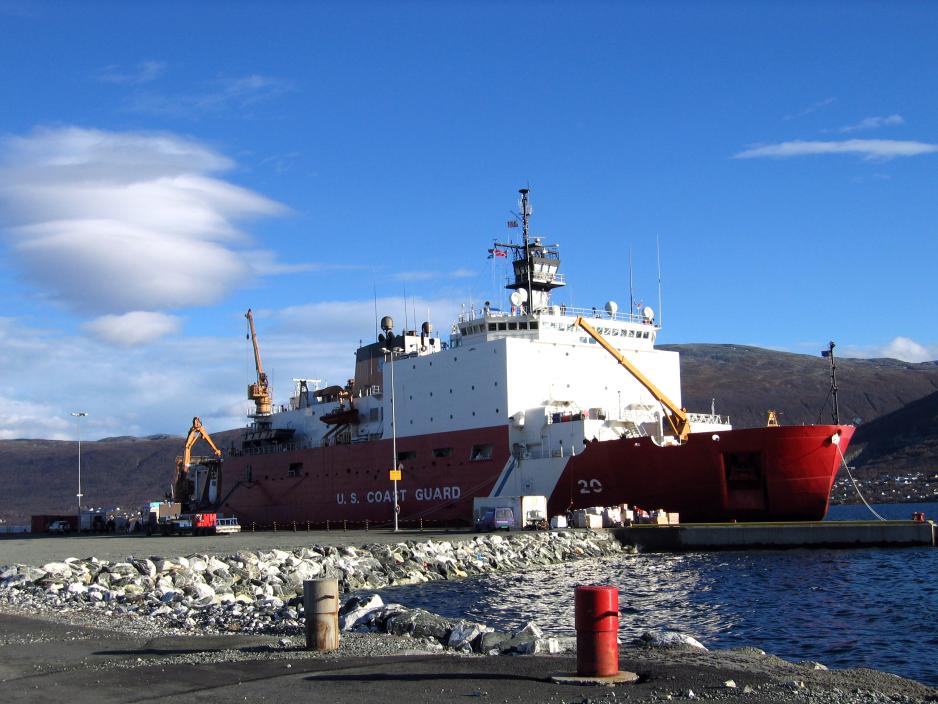
Russian ‘tail’
Unsurprisingly, the USCGC Healy’s voyage has been monitored by the Russian side. The Russian research vessel Akademik Nemtsjinov followed in its wake, as High North News has reported.
To what degree did you observe Russian presence during the cruise, such as other vessels and aircraft? Did you have any contact with the Russian side?
“We observed several vessels during the voyage and found the various vessels’ behavior to be safe and professional – and that they took due account of international law and norms,” replies Schallip.

Military participation
In addition to civilian researchers on the USCGC Healy’s voyage along the Northeast Passage were military participants – which seemingly has not been the case for previous NABOS expeditions.
Specifically, a smaller number of members of the British Navy, as well as the US Navy, Air Force, and Army, participated. In addition, two Norwegian Coast Guard members, a part of the Norwegian Navy, were temporarily present on Healy to strengthen cooperation between the coast guards.
Personnel from the US Navy and Air Force participated in the cruise to conduct research projects, says Shalene Regan. She is a Research Engineer at the US Coast Guard’s Research & Development Center and this year’s Chief Researcher on the USCGC Healy.
The US Army sergeant’s mission on the Arctic Ocean voyage is unknown, but he has helped document it by taking photos along the way.
For the record, the US Coast Guard is subordinate to the country’s Department of Homeland Security.
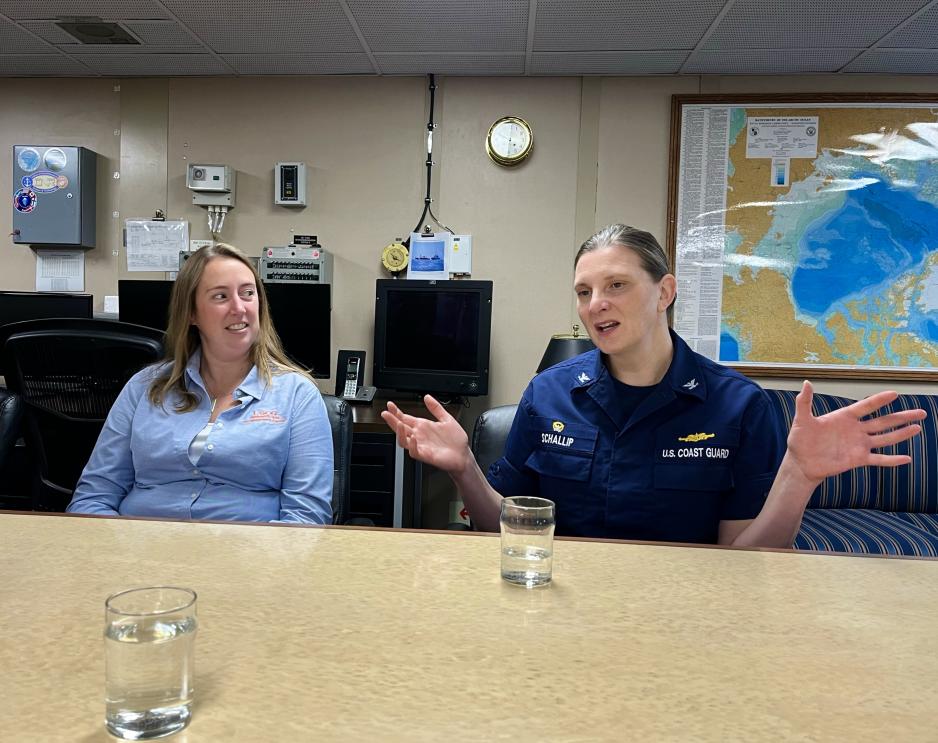
Interaction with the British Navy
Can you say a little about the British Navy’s participation in the voyage?
“The U.S. and U.K. maintain a close partnership, enabling enduring engagement and training to continuously improve their performance while on research missions. This voyage provided opportunity to observe scientific work and participate in information sharing related to oceanographic research,” says Captain Schallip.
In 2022, the British Navy and the US Coast Guard signed a statement of intent to expand their cooperation in fields such as maritime domain awareness and operations in the High North/icy waters.
“In the Arctic, the USCG and Royal Navy will also conduct more joint training in ice-covered waters to ensure sailors are kept highly trained and experienced in ice operations and ship handling,” the British Navy wrote.
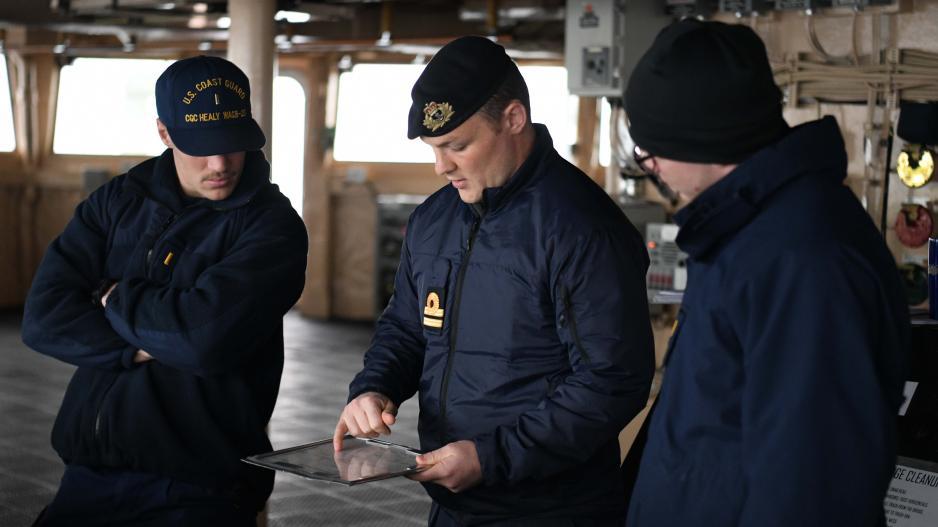
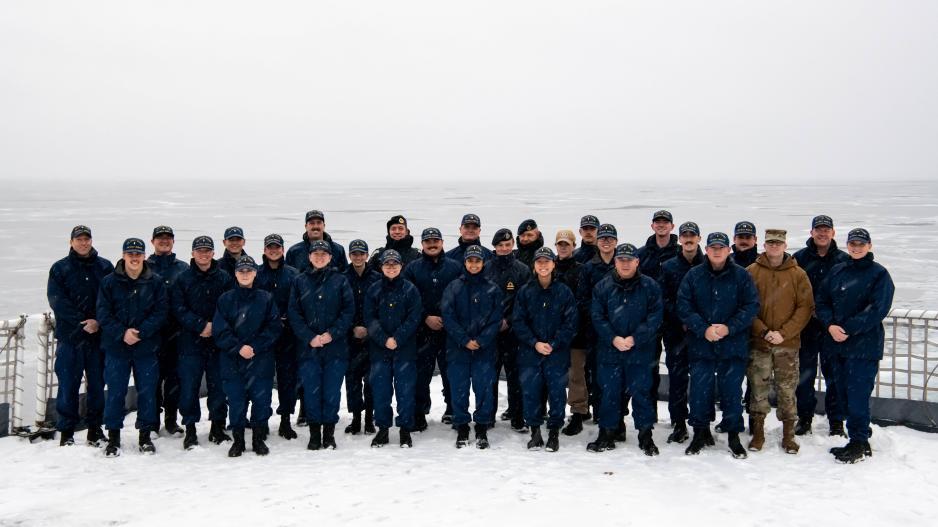
Exercise with the Norwegian Coast Guard
American-Norwegian coast guard cooperation was, as indicated, significant on the USCGC Healy’s voyage.
When the American icebreaker arrived in the Norwegian part of the Barents Sea, it embarked on joint exercises with KV Svalbard.
“Healy and Svalbard conducted operations for building interoperability and cooperation, such as a search and rescue exercise and crew exchange, which develops our cooperation and partnership in the Arctic maritime domain,” says Schallip.
She has also had a separate meeting with the KV Svalbard Executive Officer, Lt. Captain Eirik Høgstad.
“We shared experiences with operating in ice-covered waters, carrying out scientific work in the region, and continued partnership. The American and Norwegian coast guards share a ten-year-long partnership built on shared values, experiences, and visions – and we ensure mission capacity and future preparedness by conducting joint exercises.”
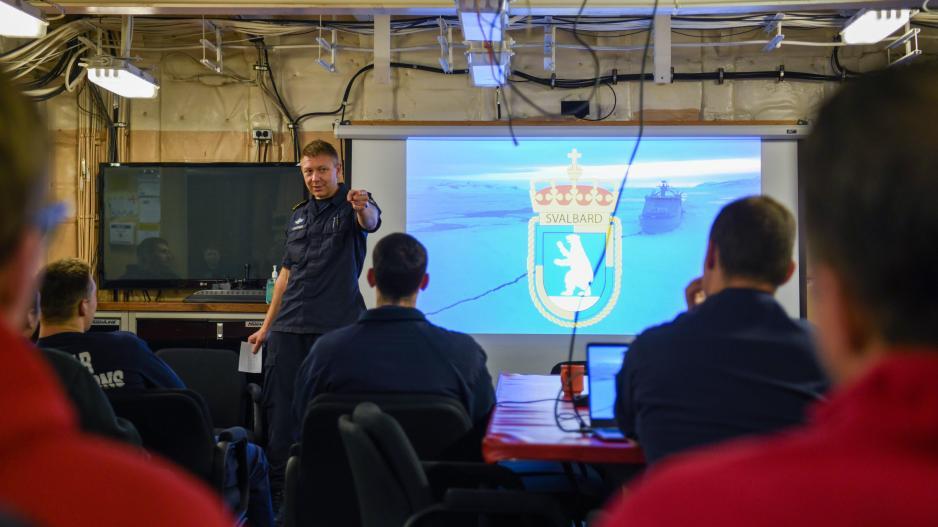
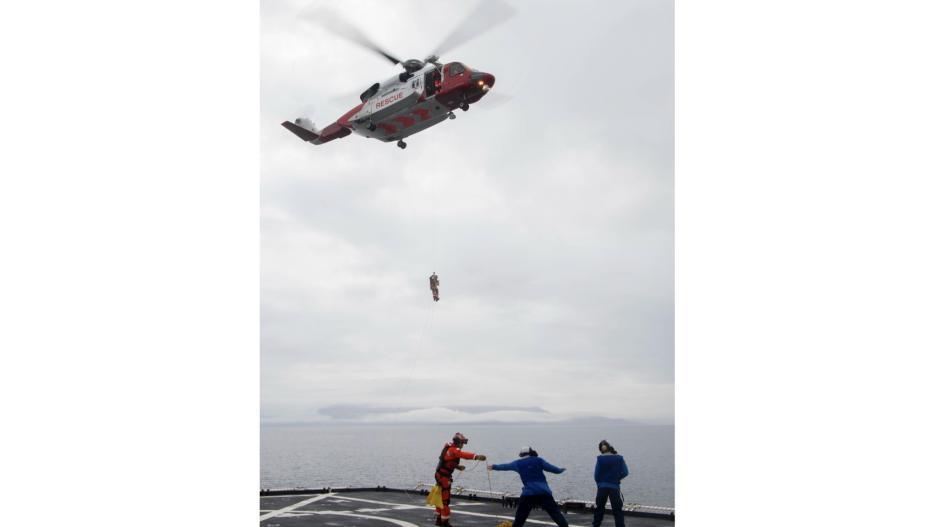
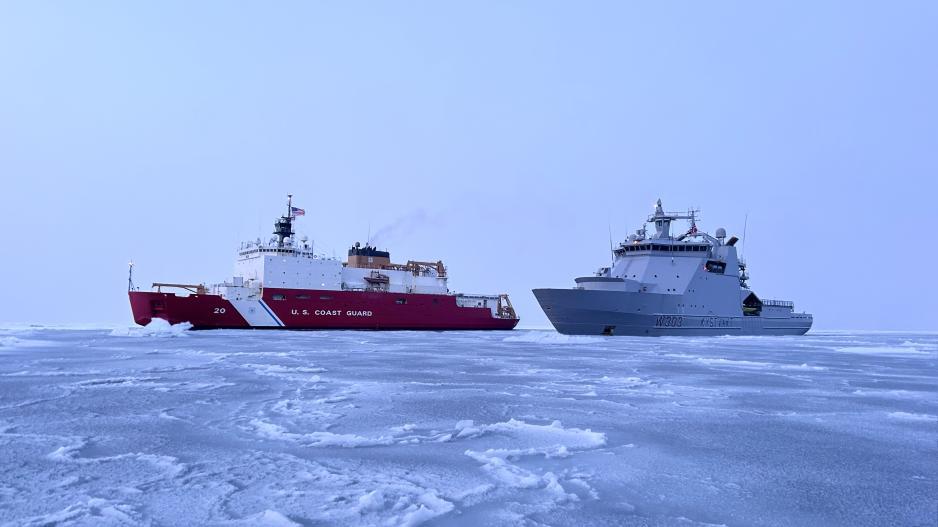
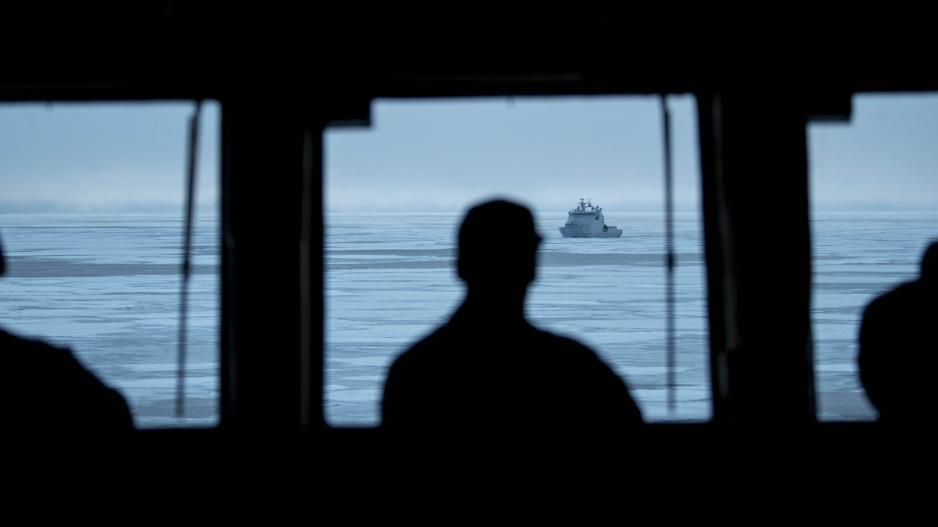
“Strengthens the defense of the region”
“The Healy deployment to the Arctic Ocean represents a deepening of our cooperation and strengthens the defense of the Baltic and Nordic regions,” wrote the US Coast Guard in a Facebook post with a photo of the USCGC Healy and KV Svalbard.
Can you elaborate on this? Which defense dimension does Healy’s presence have in the High North?
“The US Coast Guard has an obligation in regions at high latitudes and towards our allied partners to show good governance in the Arctic,” says Captain Schallip.
“Healy’s presence in the Arctic helps build cooperation with allies and partners as we work together to understand the Arctic and support others when needed – whether it concerns logistics, search and rescue, ship escort, environmental protection, or enforcement of laws and treaties.”
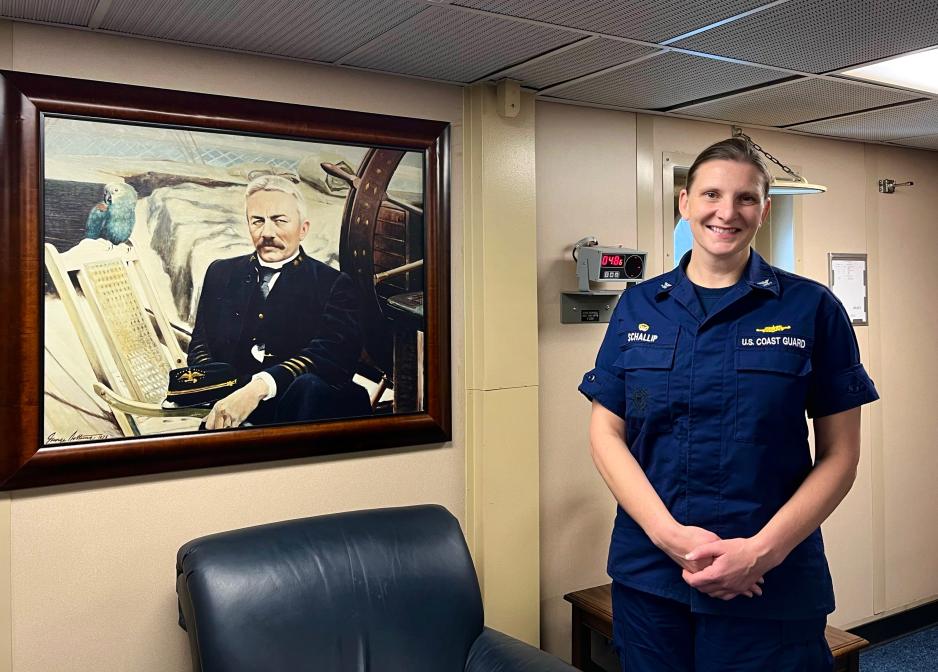
Important data
Back to the research – which was, after all, Healy’s main project to support on this Arctic voyage.
The American icebreaker proved capable of giving researchers access to remote sea areas where access is challenging.
During a polar sea expedition led by the Norwegian Polar Institute, the research vessel Kronprins Haakon tried to reach the Nansen basin this summer but had to turn back. This ship is of ice class three and can break thick ice, but it encountered too demanding ice conditions.
“The Siberian Arctic is one of the sub-regions in the Arctic where the changes in sea ice and the sea are currently most noticeable. However, it is also one of the least observed, which makes this expedition crucial if we want to create a reliable observing and forecasting system,” says Igor Polyakov, who leads the Nansen and Amundsen Basins Observational System (NABOS) project.
Polyakov is a doctor at the International Arctic Research Center (IARC), which is part of the University of Alaska, Fairbanks.
The NABOS project is funded by the US National Science Foundation and the National Oceanic and Atmospheric Administration Office.
Healy is also specifically equipped to conduct measurements of conductivity, temperature, and depth (CTD), as well as sampling from the water column in areas usually unavailable due to pack ice.
41 CTD measurements were conducted during the voyage, and several water and ice samples were taken.
“Healy has rare capabilities compared to many other countries’ icebreakers,” Brendon Mendenhall points out, Geophysical Engineer at Scripps Institution of Oceanography and member of the Ship-Based Technical Support in the Arctic (STARC) program.
He also emphasizes that research data collected on Healy’s expedition will be made available for an international research environment. This is important as conducting Arctic Ocean voyages is both expensive and demanding.
One of the purposes of the NABOS project is precisely to inform the scientific environment and the public about the effects of global warming on sea ice cover and maritime ecosystems in the Arctic – with an extended effect at mid-latitudes.
In Tromsø last week, Healy invited to a scientific round-table for researchers and operators from the US, Norway, and Canada. They discussed the best practices within search and rescue, environmental protection, as well as vessel safety and navigation in the Arctic.
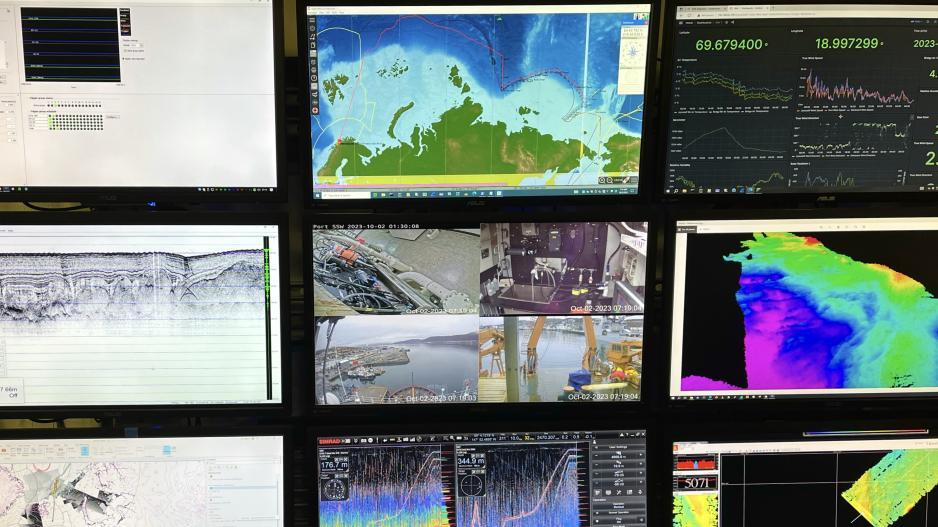

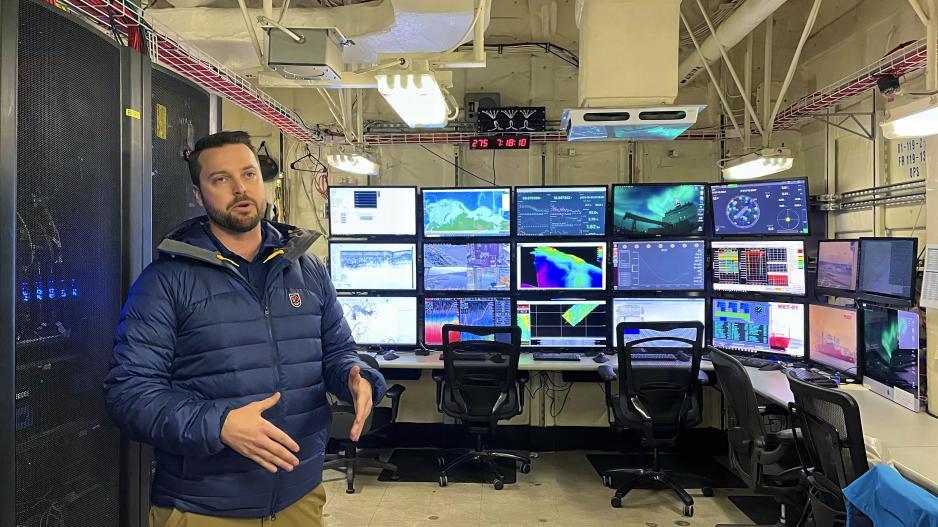
Wooden boat experiment
The crew of USCGC Healy also placed decorated wooden boats into the Arctic Ocean as part of the Arctic wooden boat experiment ‘Float Your Boat.’
It aims to increase students’ awareness of how the ice drifts in the Arctic – and how and why this has changed.
The project has been going on since 2015 under American leadership – and was initiated on Healy during a voyage in the Canadian Arctic.
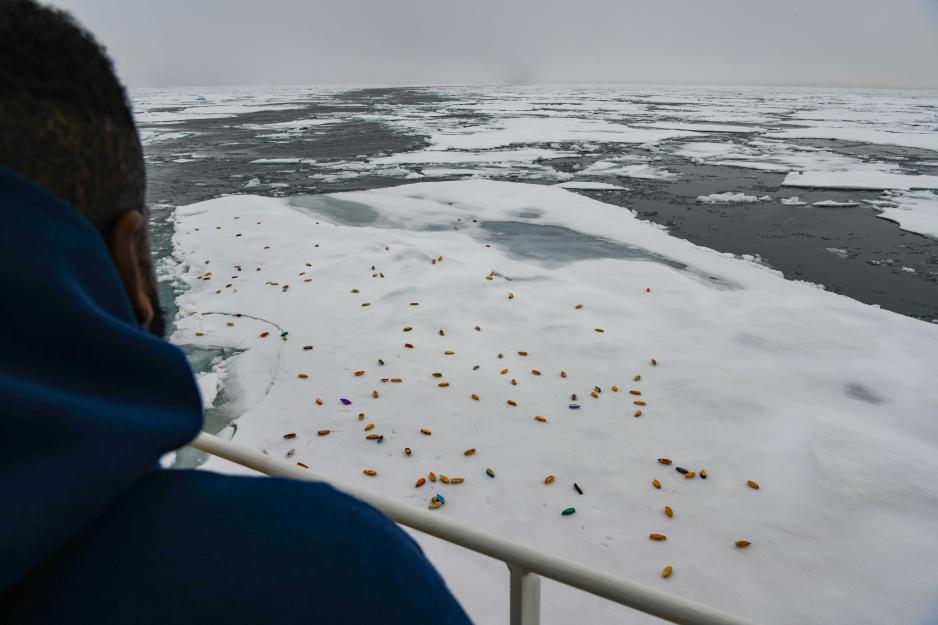

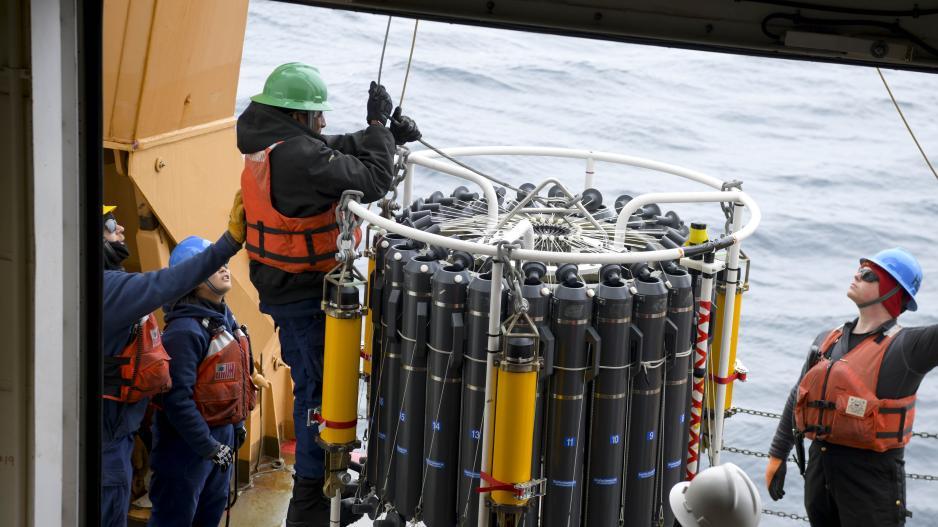

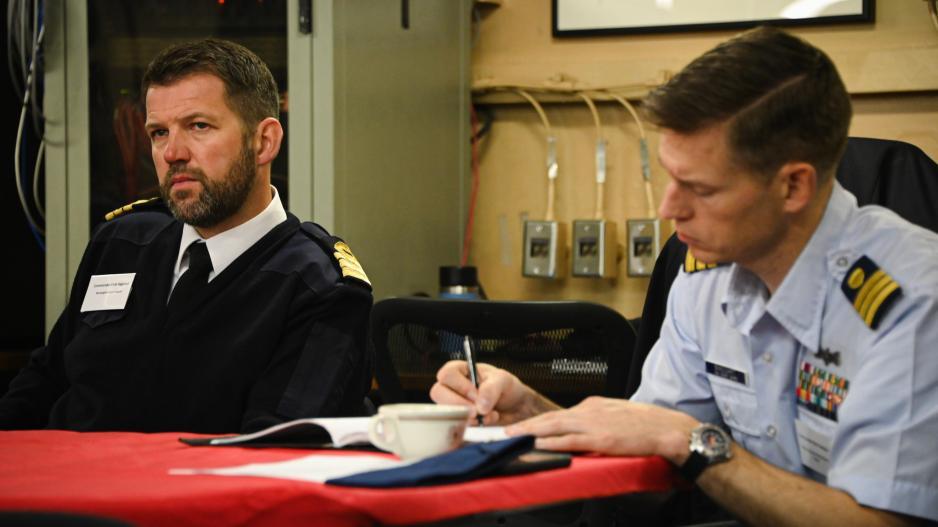
Started in the Beaufort Sea
The USCGC Healy is on a five-month-long deployment in support of Arctic science projects.
Before the voyage to the East Siberian Sea, the vessel was on a mission in the Beaufort Sea. This is a part of the Arctic Ocean north of Alaska and Canada, between the Bering Strait and the cluster of Canadian polar islands.
With a team of researchers aboard, installations were deployed for the Arctic Mobile Observing System (AMOS) – a network of oceanographic instruments that observe the ocean’s and sea ice’s physics.
This is the observing system of the Office of Naval Research in the US Department of Defense.
In the Beaufort Sea, Healy also conducted exercises and crew exchanges with the Canadian Coast Guard’s icebreaker CCGS Sir Wilfrid Laurier.
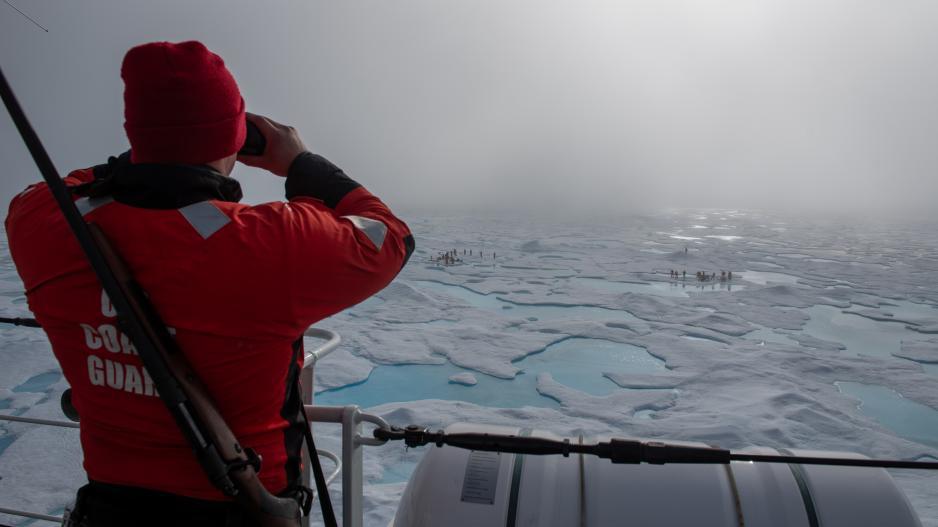
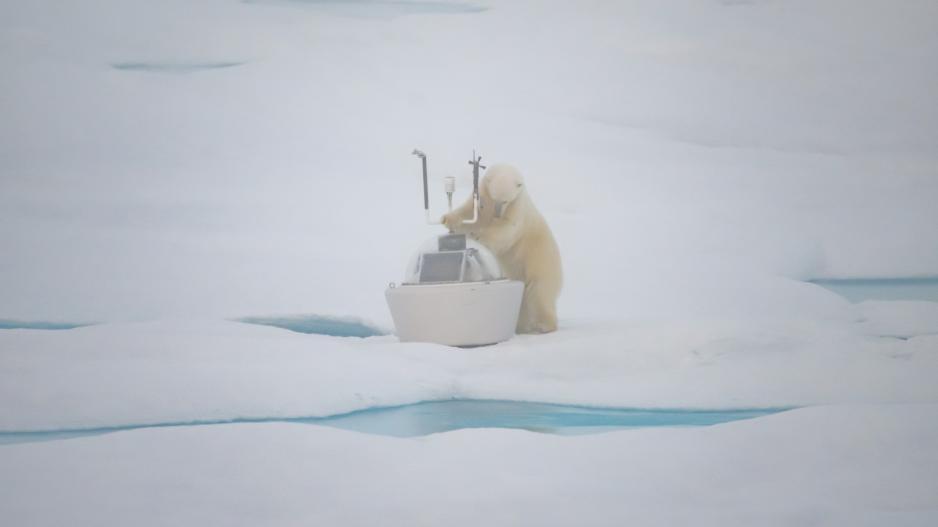
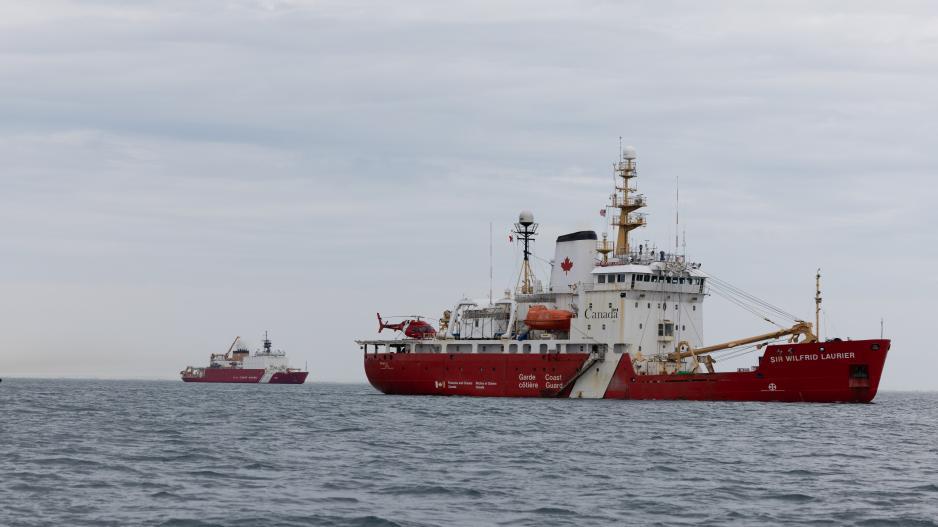
Home for Christmas
The USCGC Healy’s long journey is still not over.
“Healy has traveled over 10,000 nautical miles since leaving her home port in Seattle, Washington, at the beginning of July,” says Captain Schallip.
“We have a few port calls in Europe before we continue our transit back to Seattle, arriving early in December,” she smiles.
The Coast Guard vessel sailed from Tromsø on Thursday, and is now docked in Copenhagen, Denmark.